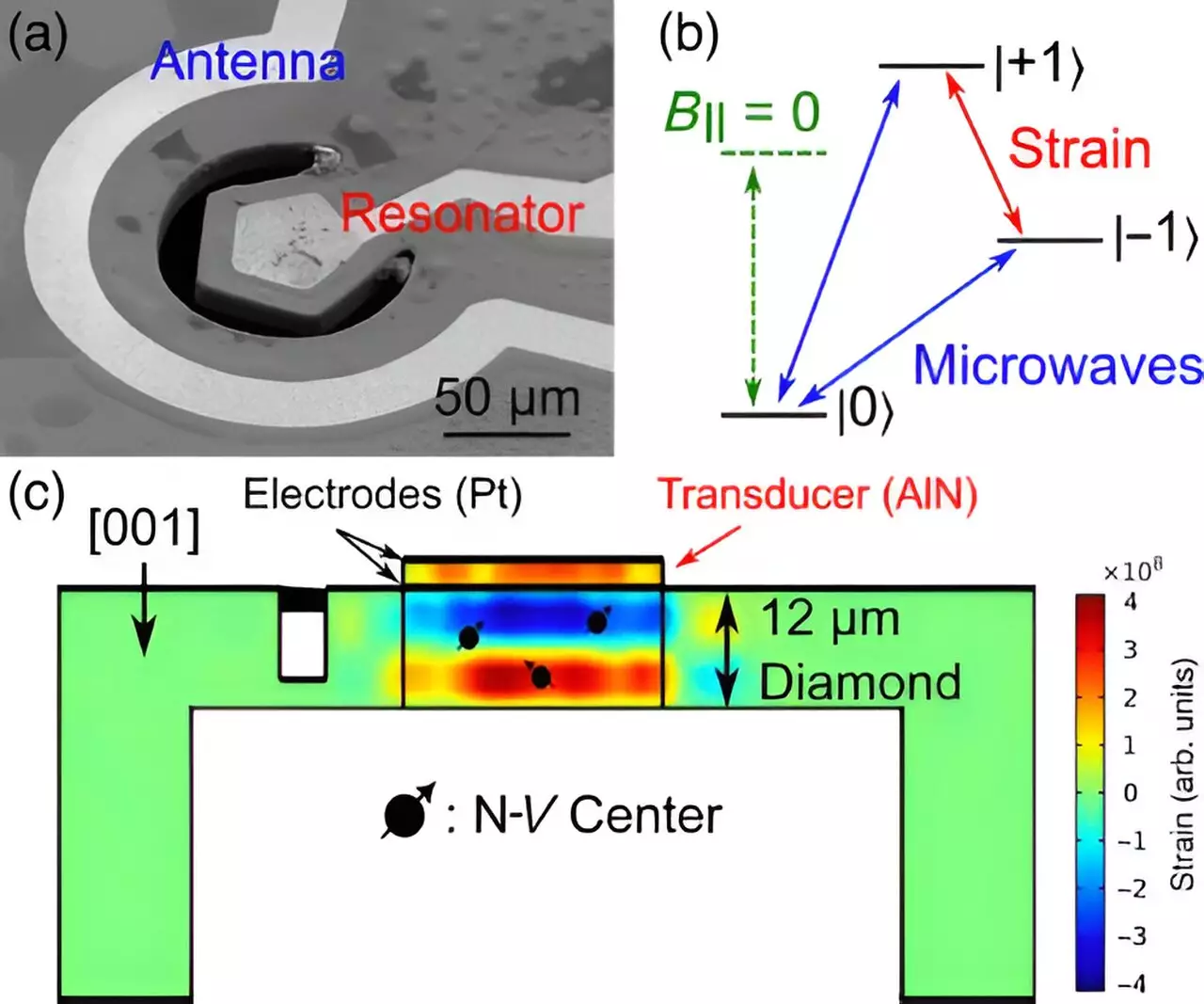Quantum sensing has emerged as a frontier in precision measurement, leveraging the unique properties of quantum systems. Among the various materials explored in the realm of quantum sensors, diamond stands out as a leading candidate. Gregory Fuchs, a professor at Cornell University, highlights the significant potential diamonds possess when it comes to quantum applications. In an innovative study involving a collaborative effort between several research institutions, including the U.S. Department of Energy’s Argonne National Laboratory, researchers have taken substantial strides forward by visualizing the internal vibrations of diamonds at the microscopic level.
The research team developed groundbreaking techniques that utilize sound waves to elicit vibrations within diamonds. This approach allowed them to capture exceptional X-ray images of the material’s dynamic behavior. They meticulously tracked how atomic structures within the diamond either expanded or contracted in response to varying sound wave frequencies. By creating a mathematical relationship between the strain on the diamond and the intrinsic spin of its atoms, the researchers have provided an essential foundation for advancements in quantum sensing technology.
This combination of measuring and comparing atomic strain and spin underlines a pivotal achievement for quantum information science. As quantum sensors promise unprecedented precision in applications ranging from medical imaging to navigation systems, understanding these atomic interactions becomes crucial for future innovations.
The collaborative nature of this research cannot be overstated, as it involved scientists from multiple institutions, including Cornell, Purdue, and Argonne. The study featured the application of specialized equipment developed at Cornell and Purdue to assess the diamond’s spin in response to sound vibrations. Meanwhile, Cornell graduate student Anthony D’Addario traveled to Argonne to leverage the Advanced Photon Source (APS), a sophisticated facility that produces X-rays for a detailed examination of atomic behavior.
A significant focus of their investigation was the nitrogen vacancy (NV) center within diamonds, a defect that acts as a reliable platform for quantum sensors. By utilizing the high-resolution imaging capabilities of the APS, researchers could assess the atomic movement in the vicinity of these NV centers with remarkable precision.
Once the team gathered data on both spin and strain, they correlated these two fundamental properties in a groundbreaking mathematical formula. This correlation offered new insights into the relationship between atomic strain and spin manipulation. D’Addario expressed excitement over discovering a new parameter connecting these atomic features, as this agreement with theory and previous experiments validated their findings.
Manipulating spin typically employs electromagnetic waves; however, the team’s innovative use of acoustic waves signifies a paradigm shift. Acoustic modulation presents unique benefits, including protecting quantum information from decoherence—a critical challenge in quantum computing and sensing. The ability of acoustic waves to maintain the integrity of quantum states hints at their promising future in building stable quantum systems.
While one might intuitively think that introducing sound into a quantum system could introduce chaos, preliminary findings suggest otherwise. The use of acoustic waves not only aids in stabilizing quantum information but also allows for miniaturization of devices. As a foot-long electromagnetic wave contrasts sharply with the diminutive scale of gigahertz acoustic waves—comparable to a human hair—the opportunity for compact, interference-free setups becomes apparent.
Fuchs emphasizes the potential of acoustic-wave devices for maintaining distinct signals within confined spaces, thus enhancing the overall efficiency of quantum systems. The combination of diamond as a quantum host material and the advantages lying in acoustic waves marks a turning point in the quest for superior quantum sensors, with implications for a wide range of scientific and technological fields.
The collaborative effort showcased in this study exemplifies the potential within multidisciplinary approaches to advance our understanding of quantum phenomena. By synthesizing knowledge from material science and quantum mechanics, researchers can bridge significant gaps in the field and unlock tools for next-generation technologies.
Diamond, combined with the novel manipulation of acoustic waves, promises to pave the way for a new era of quantum sensors. As these developments continue, one can expect substantial impacts across medicine, navigation, and many other domains profoundly reliant on precision measurement. With ongoing research supported through initiatives like Q-NEXT, the future for quantum sensing using diamonds looks exceptionally bright.

